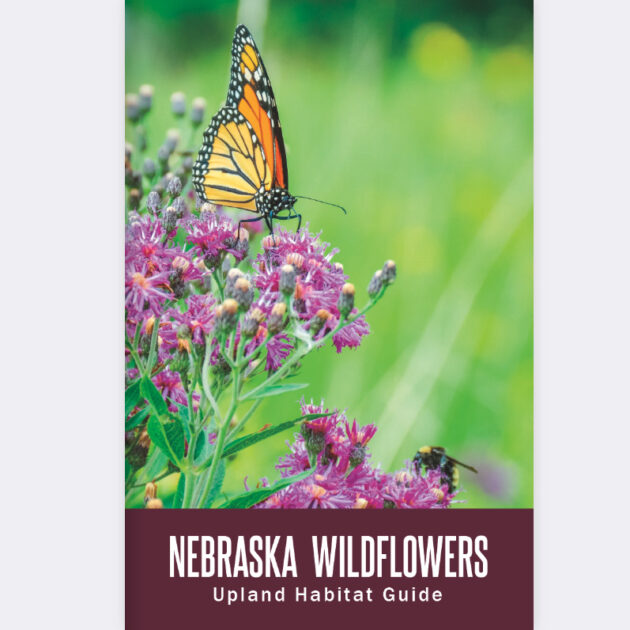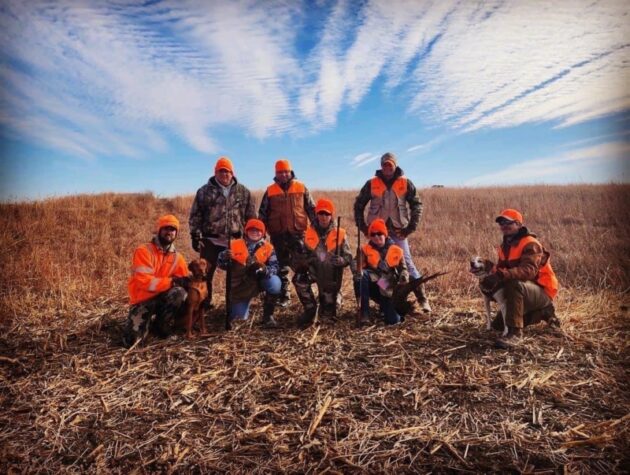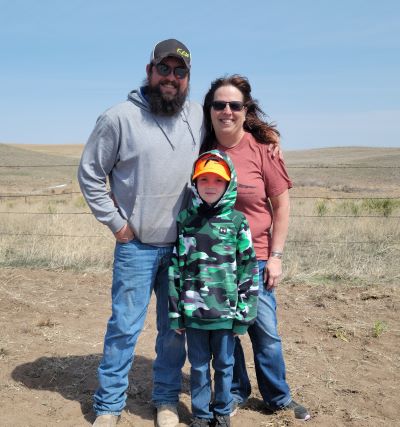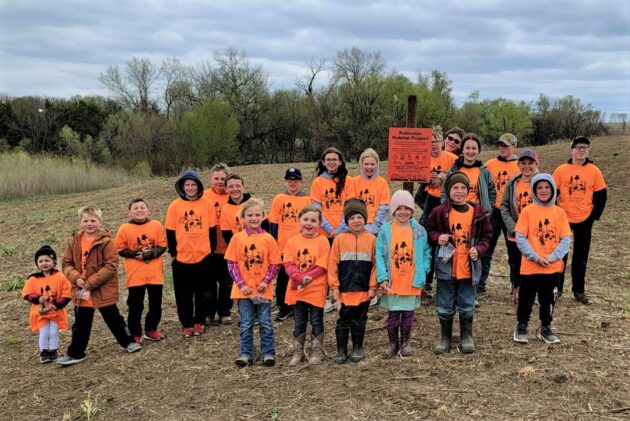Addie's tale of a full weekend of hunting, gift-giving, delicious dinner, and thrift store shopping

December is known by most as the Holiday season, even if some folks have begun decorating their homes (and offices!) back in November. In southwest Nebraska it’s finally winter, and with the pandemic more or less over, it was time to start new traditions with friends – specific to upland gamebird hunting. While the initial idea started from a hilarious thrift store buy for a friend, it quickly morphed into a full Pheasant Festivus with a weekend of hunting, gift-giving, delicious dinner, and thrift store shopping.
The main goal: to complete the Nebraska Upland Slam for three people – just a single species needed for each person, whether it be a quail or pheasant. Spirits were high for this occasion as three couples made their way down to Southwest Nebraska, braving snow packed roads from the recent winter storm that hit portions of the state.
The weather was beautiful, dogs and hunters excited! Over Saturday and Sunday winter cover was targeted – both thick CRP and wheat stubble with pocket areas of thick-stemmed ‘weedy’ vegetation and shrub thickets, the hunters trying to find the late season wily-birds. A couple of the pockets had recently burned in the wildfires that occurred this past April. While the effects of these wildfires will be long-lasting within the communities, the impact on the habitat was impressive. A flush of weedy vegetation grew up even with bad drought, and thickets had put out suckers that grew >2ft tall!

While the native plant community certainly benefited from the fire, the drought overall has been hard on the pheasant population the last couple of seasons in southwest Nebraska. Pockets near stubble that once held more than 30 pheasants now only have a few. However, quail numbers still seem moderately stable. Add a good dog or three to the mix and you’re sure to increase your likelihood of at least seeing a covey! “Quail!” seemed to be the theme of the weekend, with multiple coveys flushing 80+ yards from thickets next to wheat stubble. Fortunately for the quail, after a few hail-mary shots at the birds far distances, they’re still hanging around for the next visit to that field.
A solid point on a rooster in wheat stubble was the single bird harvested, and by the one person NOT needing a pheasant to complete the slam! While it might not have been the ideal year to start this Pheasant Festivus tradition, especially in a portion of the state deep in year 2 of drought and current D4 status, great memories were still made, and fun was had by everyone. Especially the dogs!
As you go about making your own hunting memories, I encourage everyone to take a good look at the habitat you walk – do you see potential areas for improvement? Funds are available for a variety of projects through the USDA, the Nebraska Game and Parks Commission Berggren Focus on Pheasant Initiative, or the Pheasants Forever Pathways for Wildlife program. Now is the time to start thinking of habitat improvements: Areas encroached by smooth brome, a prescribed fire to regenerate native grasses, spots where a small shrub thicket could benefit quail, or even native grass buffers for fields with erosion issues. Don’t let another season go by to wait and improve your upland gamebird habitat and hunting honey-hole! Contact your local Farm Bill Wildlife Biologist located in a USDA-NRCS office to learn more!




About the Author: Addie Piernicky
Adela Piernicky is our Farm Bill Biologist II out of McCook, NE. Previously a resident of Maine, she now resides in southwest Nebraska where she enjoys hunting with her husband, two German shorthair pointers, and snuggles with her rambunctious toddler!






